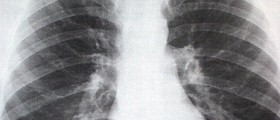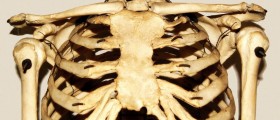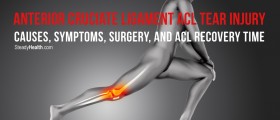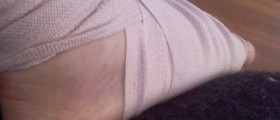The sternum is also known as the breastbone, and it is one of the main bones in the frontal chest wall. The front endings of the ribs are composed of cartilage and they are connected to the sternum. The sternum is also connected to the clavicles with joints, and all these connections are flexible in order to provide stability but also elastic properties of the chest wall, which is a very dynamic structure. The sternum is composed of spongiform bone tissue which is itself fragile, but sternal fractures are not very common due to the flexibility of the chest wall. However, injuries and fractures of the sternum can occur in some situations.

Common Causes Of Sternal Injuries
The most common causes of breastbone trauma are deceleration injuries. These injuries can occur when a moving body hits a stationary object, which often happens in car accidents and falls. Blunt front chest trauma happens when a moving object hits the anterior chest, but it does not penetrate it. This is very common in sports (being hit by ball or baseball bat; in martial arts, etc.). Upper-body resistance training puts a lot of pressure on the breastbone, so weight lifters should make sure to use appropriate weights.
Patients with distortions of the spine are more susceptible to injuries of the sternum, as well as patients with osteoporosis (lower than normal bone density). Osteoporosis is common in elderly women and in patients on long-term corticosteroid therapy.
Symptoms Of Sternal Injuries
Depending on the severity of the injury, symptoms may range from mild pain and discomfort to intense pain and disability, which brings the patient to the emergency room. The pain gets worse with movements and deep breathing. If deeper structures are injured, various severe complications can appear, such as pneumothorax (presence of air in the chest cavity) and internal bleeding.
Diagnosis
The diagnosis of a sternal injury and fracture is easily made by anamnesis from patient and chest X-ray.
Treatment
If there are no other associated injuries of the chest wall, fractures of the sternum completely recover within 8-12 weeks. In mild and moderate cases, no interventions are needed. Rest is strongly advised as well as use of analgesics, usually non-steroidal anti-inflammatory drugs (NSAIDs). Surgical treatment is rarely required, and it is only recommended for displaced and unstable fractures. Patients who undergo surgical management of sternal fractures require a longer recovery due to possible dehiscence of the wound (separation of the stitched parts).
In conclusion, injuries of the sternum are usually benign unless they are associated with damage to other organs. Given that the position of the sternum is in the middle line of the anterior chest close to many vital organs, there is a high probability of associated injuries of these structures, which is much more important issue than injury of the sternum itself.
- Brookes JG, Dunn RJ, Rogers IR. Sternal fractures: A retrospective analysis of 272 cases. J Trauma. 35:46–54.
- Hossain M, Ramavath A, Kulangara J, Andrew JG. Current management of isolated sternal fractures in the UK: Time for evidence based practice? A cross-sectional survey and review of literature. Injury. 41:495–8.
- Roy-Shapira A, Levi I, Khoda J. Sternal fractures: A red flag or a red herring? J Trauma. 37:59–61.
- Photo courtesy of SteadyHealth
















